| Designation: | Pinzgauer 716 MK |
 |
|---|---|---|
| Manufacturer: | BAE Mobility & Protection Systems | |
| Product type: | Auxiliary Vehicles | |
| Name: | Patrol Vehicle |
Pinzgauer is a high mobility all-terrain 4x4 and 6x6 military utility vehicle manufactured in Guildford, Surrey, United Kingdom, by BAE Systems Land Systems. The Pinzgauer has been manufactured in the United Kingdom since the year 2000, originally by Automotive Technik Ltd (ATL). Before then the Pinzgauer was produced by Steyr-Daimler-Puch in Graz, Austria (hence the name, based on an Austrian breed of horse). ATL has since then been acquired by Stewart & Stevenson Services, Inc. in 2005, which in turn became a subsidiary of the aerospace and defence group Armor Holdings, Inc in May 2006. One year later Armor Holdings was itself acquired by BAE Systems.
The original prototype was produced in 1965 and production began in 1971, as successor of the Haflinger. This first generation model was produced until 1985 by Steyr-Daimler-Puch.
The Pinzgauer is one of the most capable all-terrain vehicles ever made. While it is not as fast as the HMMWV, it can carry more troops. Even the smaller 710M can carry 10 people, or two NATO pallets. Both the 4x4 and 6x6 models can tow 5,000 kg on road, and 1,500 or 1,800 kg, respectively off-road. It has a range of over 400 km on one tank of fuel or nearly 700 km with the optional 125-litre tank. The first generation Pinzgauer is available in both four-wheel drive (model 710) and six-wheel drive (model 712) versions.
The Pinzgauer was also designed to be reliable and easy to fix, so it is shipped with an air-cooled dual-carbureted engine. Air-cooled carbureted engines are still in use in many small aircraft due to their reliability. This is partly due to the fact that air-cooled engines have been around longer, and partly because they are simpler and have fewer parts. The engine in the Pinzgauer was designed for it; it has more than one oil pump so that the engine will not get starved of oil no matter how it is oriented. An American automotive magazine once described the sound of the engine as "a vacuum cleaner blowing steel balls one by one into a tin can".
It also has a very advanced chassis contributing to its high mobility. It has a central tube chassis with a transaxle which distributes the weight more evenly and keeps the center of gravity as low as possible. The differentials are all well sealed units and require minimal additional lubrication. The pinzgauer also has portal axles like the Unimog and unlike the HMMWV, Hummer H1, to provide extra clearance over obstacles. The 710 4x4 was the more popular variant, but the Pinzgauer was designed to have a very capable 6x6 configuration from the start. The rear suspension on the back of the 6x6 712 is designed to provide maximum traction in the most demanding circumstances along with increasing its towing, load carrying and offroad abilities.
During production from 1971 until 1985 18,349 first-generation 710s and 712s were produced and sold to both Civilian and Government buyers.
A popular idea in North America and other countries is to import first generation Pinzgauers for individual use. Any Pinzgauer can be imported, but due to the high cost and the difficulty in certifying them the second generation Pinzgauers are very rarely imported. First generation Pinzgauers are often imported because they are widely available and thus cheaper. Both Switzerland and Austria have released many 1st generation pinzgauers into the civilian marketplace as they converted their fleet to newer trucks. Likewise, 1st generation Pinzgauers sold to civilians in Europe are occasionally found and imported.
Vehicles over 25 years old are much easier to import due to a rolling 25 year exemption to DOT regulations and a rolling 21 year exemption for EPA requirements. The first generation Pinzgauers were equipped with typical safety equipment for that era: seat belts, emergency flashers, etc. and have no difficulty meeting US standards for vehicles of that age. In many aspects the Pinzgauer was better equipped from a safety perspective than many contemporary 4x4s (Jeeps, Land Rovers, etc.) coming from the factory with seat belts, power brakes, integral roll bars, and other safety focused design features. Like most 4x4s from the 70s and early 80s, the driver has to be aware of the higher centre of gravity similar to Land-cruisers, Trooper, Explorers, Broncos, Blazers, and Jeep CJ-5s. As with the other 4x4s of that era, it is possible to tip them if driven aggressively or inappropriately. But most will find the Pinzgauer to be as safe or safer than its contemporaries due to the high quality of engineering the SDP factory utilized.
The first generation trucks are popular with off-roaders world-wide due to their low cost and their ability in off-roading. There are several shops in the USA that deal with importing Pinzgauers from both individual sales and government auctions. Dealers are also found in Canada and other countries.
The Pinzgauer is used quite widely in the United Kingdom as a fire engine in smaller towns and villages and is increasingly replacing the Land Rover Defender in the military utility vehicle role despite its high cost of upwards of US$100,000 per unit. A new armoured version called the "Vector" is to enter service in the British Army in early 2007 as part of an effort to provide safer patrol vehicles for troops in Afghanistan. The 6x6 Vector PPV (Protected Patrol Vehicle) will, according to the manufacturer, "Build on the existing proven design, with enhancements that will include a combination of physical protection as well as the use of sophisticated electronic counter measures to maximise survivability while on patrol". However, some critics[attribution needed] have called the Vector a "coffin on wheels", as it has no windows or firing ports for its passengers (reducing its effectiveness as a patrol vehicle) and may not be mine proof. Yugoslavia has been the first generation Pinzgauer customer in huge numbers. Serbian forces added armor and successfully used these field modifications in Balkans conflicts. Many Pinzgauers were sold to military forces (initially Austrian and Swiss) to be used as non-tactical utility vehicles. Typical military roles are as general purpose utility truck, command vehicles, troop carrier, ambulance, and tow vehicle. Roles very similar to other civilian sourced CUCV vehicles like Land-Rover in the UK, the Blazer CUCV in the US, and Geländewagen in many European countries.
The New Zealand army has purchased 321 Pinzgauer vehicles in 8 variants to fulfill the Light Operational Vehicle (LOV) role. The Malaysian Army had purchased this model to replaced older Volvo C303 in their inventories.
The Pinzgauer was also marketed to the civilian marketplace world-wide for use as campers, farm trucks, ambulances, fire-trucks, and rescue vehicles. Likewise, many ended up being used as tourist vans due to their large passenger capacity and stable, reliable platform. Pinzgauers have been used as tourist transports in Africa, Australia, South America, Hawaii, and other exotic locales. Some are still in use today. Pinzgauers were also marketed to and used extensively by energy companies for oil exploration purposes. A few pinzgauers were used for off-road racing, including the famous Paris to Dakar Rally.
Similar-purposed vehicles include the German Daimler-Benz Unimog and Geländewagen trucks, the British Land Rover Wolf, and the American HMMWV "Humvee".
|
||||||||||
|
||||||||||||||||||||||||||||||||||||||||
All contracts...
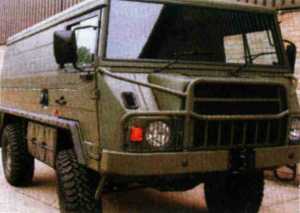 |
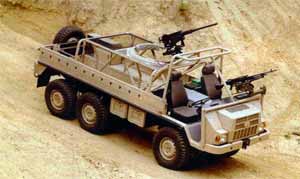 |
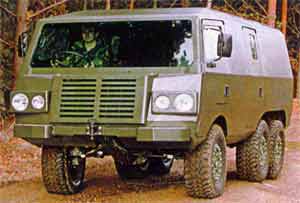 |
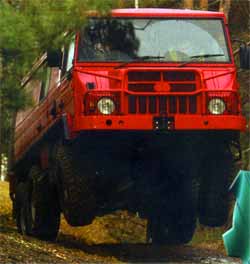 |
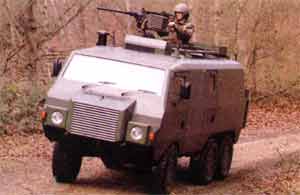 |
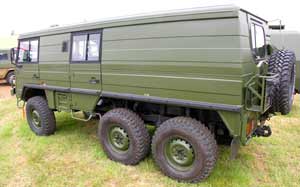 |
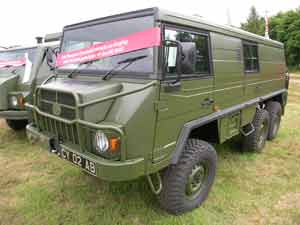 |
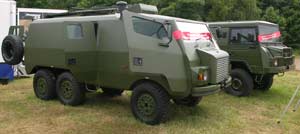 |
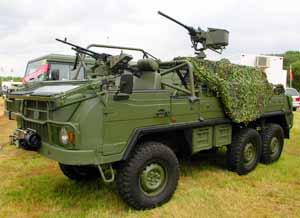 |
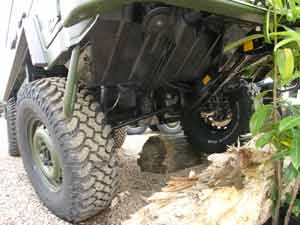 |
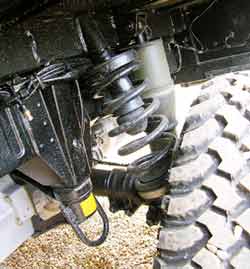 |
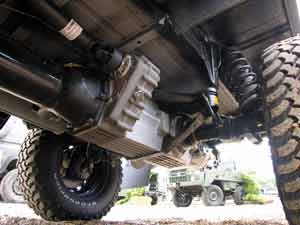 |
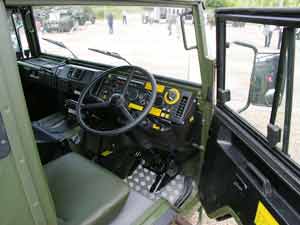 |
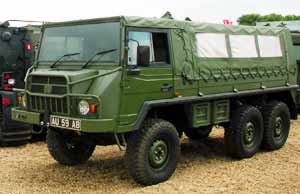 |
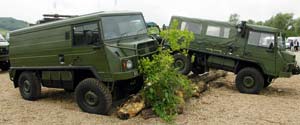 |



